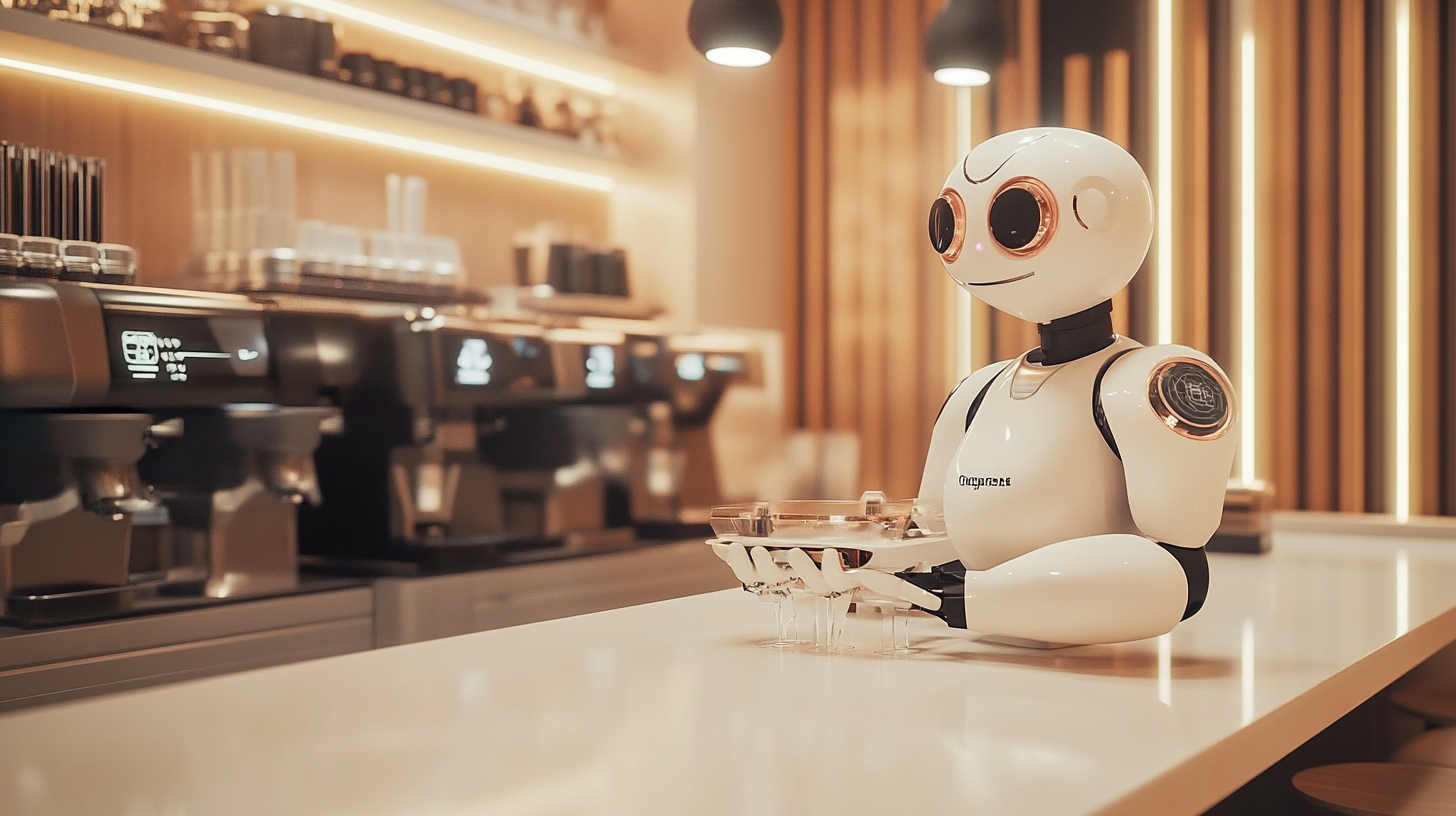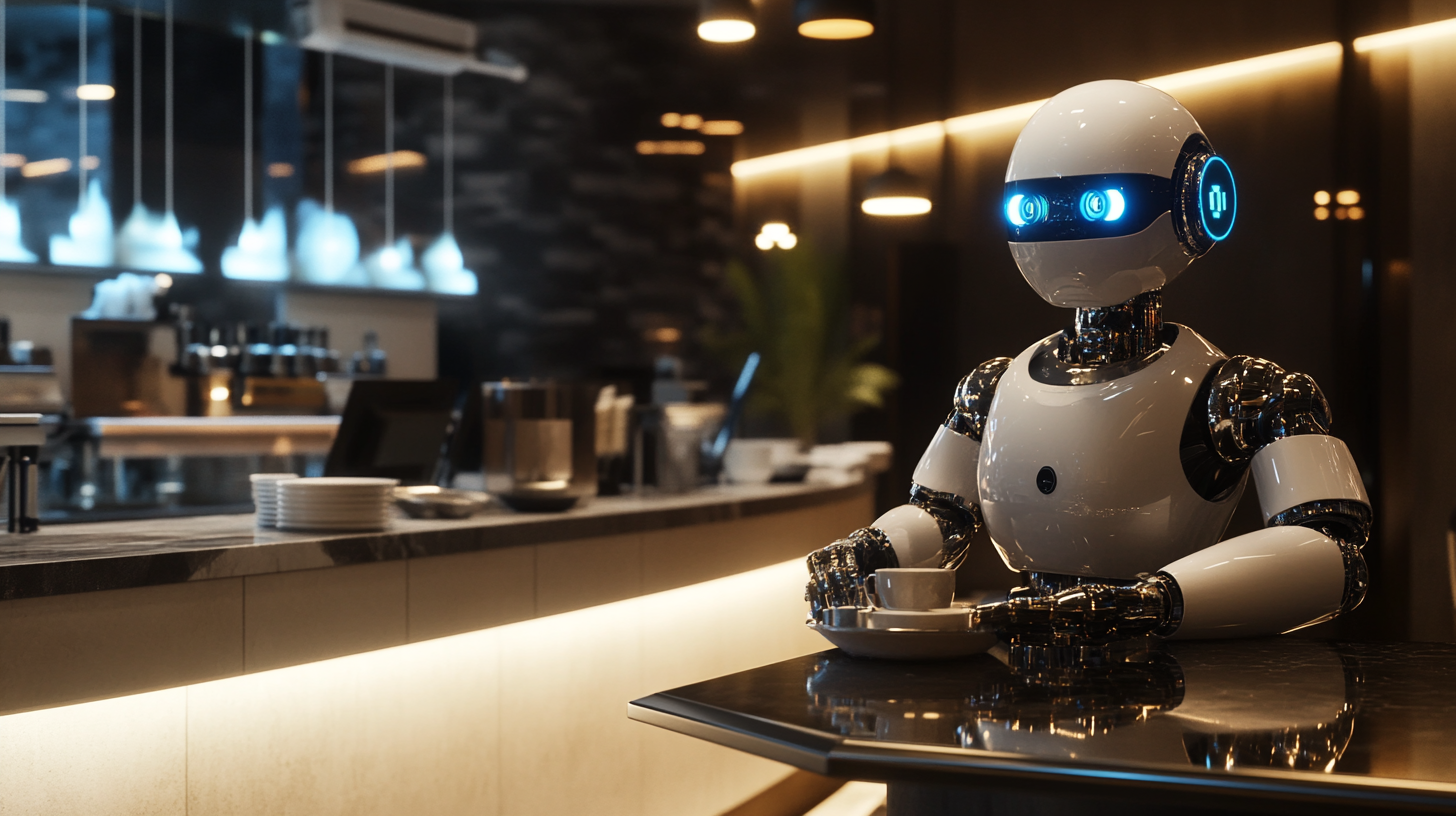Discover the Best Robot Cafe: Unveiling 10 Key Specifications for Optimal Efficiency and Service
As the technology landscape evolves, the emergence of Robot Cafes represents a significant milestone in the food service industry, combining automation with consumer experience. According to a recent report by MarketsandMarkets, the global market for robotic process automation is projected to reach $7.6 billion by 2024, with the food and beverage sector increasingly adopting these innovations to enhance efficiency and service quality.

Robot Cafes are revolutionizing traditional dining experiences by utilizing advanced artificial intelligence and robotics to streamline operations, reduce labor costs, and deliver personalized customer interactions. In this blog, we will unveil the top 10 key specifications that define an optimal Robot Cafe, highlighting how these technical features contribute to maximizing efficiency and improving service delivery, ultimately setting a new standard in the hospitality industry.
Key Features to Look for in a High-Performance Robot Cafe
When exploring the landscape of robot cafes, it's essential to consider the key features that define high-performance establishments. First and foremost, the efficiency of the robotic systems is paramount. Look for robots equipped with advanced navigation technologies like LiDAR and AI-driven algorithms. These allow them to avoid obstacles, optimize routes, and deliver orders swiftly, minimizing wait times for customers. The ability of robots to work seamlessly alongside human staff is another critical aspect, ensuring a harmonious and productive service environment.
In addition to operational efficiency, quality of service should never be overlooked. High-performance robot cafes need to feature user-friendly interfaces that allow customers to place orders easily and receive personalized recommendations. Furthermore, consider the maintenance and reliability of the robots. A robust support system and frequent software updates are crucial to keep the robots functioning smoothly, ensuring that the cafe can serve customers consistently without interruptions. By focusing on these specifications, potential café owners can create an enjoyable and efficient customer experience, setting themselves apart in the evolving industry of automated dining.
Discover the Best Robot Cafe: Unveiling 10 Key Specifications for Optimal Efficiency and Service
| Specification | Description |
|---|---|
| Automation Level | Fully automated operations with minimal human intervention. |
| Service Speed | Average service time per order is under 5 minutes. |
| Menu Variety | Offers a selection of 50+ different beverages and snacks. |
| Payment Methods | Supports contactless payments, mobile apps, and traditional cards. |
| User Interface | Interactive touchscreens with multiple language support. |
| Self-Maintenance | Equipped with cleaning and replenishing features. |
| Customer Feedback System | Incorporates real-time customer feedback for continuous improvement. |
| Aesthetic Design | Modern and minimalist design that fits in various environments. |
| Energy Efficiency | Designed to reduce power consumption while maintaining performance. |
| Safety Features | Includes emergency shut-off and obstacle detection systems. |
Common Challenges Faced by Robot Cafes and Their Solutions
The rise of robot cafes has brought exciting innovations, yet it also poses unique challenges. One significant issue these establishments face is staffing shortages, which can compromise service efficiency. A recent report highlights that up to 60% of restaurants are struggling to find enough employees, leading many to consider robotic solutions as viable alternatives. Robots, often dubbed 'cobiots', can effectively support human staff by handling repetitive tasks, allowing employees to focus on more customer-centric roles.
To maintain the human touch while integrating automation, cafes must prioritize seamless interactions between robotic and human staff. For instance, employing robots for tasks like drink preparation can enhance service speed while allowing staff to engage more personally with customers. As highlighted by industry data, restaurants that successfully blend technology with human elements report a 25% increase in customer satisfaction.
**Tips for Success in Robot Cafes:**
- Ensure training for staff on collaborating with robots to create a cohesive work environment.
- Implement regular feedback mechanisms from customers to refine robot performance and improve service.
- Explore partnerships with technology providers to stay updated on innovations that can further enhance efficiency.

Innovative Technologies Driving Efficiency in Robot Cafes
In recent years, the rise of robot cafes has redefined the landscape of the food service industry, leveraging innovative technologies to enhance efficiency and customer experience. According to a report from MarketsandMarkets, the global market for robotic process automation in hospitality is projected to reach $2.7 billion by 2026, growing at a CAGR of 25.2%. This significant growth underscores the intense interest in automating service processes, where robots excel in consistency and speed.
At the heart of these advancements are cutting-edge technologies such as artificial intelligence, machine learning, and advanced robotics. AI-driven software systems enable robots to learn and adapt to customer preferences, personalizing service experiences while minimizing wait times. Moreover, the utilization of IoT devices allows for seamless integration between the robotic systems and kitchen operations, ensuring that orders are prepared and delivered efficiently. A study from the International Journal of hospitality Management highlights that cafes employing robotic assistants have seen a 30% increase in service speed, significantly enhancing customer satisfaction and operational productivity. As the industry continues to evolve, exploring these technological drivers will be crucial for cafes looking to remain competitive.
Robot Cafe Efficiency Metrics
The Importance of Customer Experience in Automated Service
In today’s fast-paced world, customer experience remains at the forefront of any successful business model, especially in the realm of automated services like robot cafes. These cutting-edge establishments utilize advanced robotics and artificial intelligence, yet the human element—though less tangible—ultimately dictates customer satisfaction. Ensuring patrons feel valued and well-served is critical, even when the service is delivered by machines. This emphasis on customer experience becomes a catalyst for repeat visits and positive word-of-mouth.
To enhance the customer experience in a robot cafe, several factors come into play. Firstly, the design and interface of the robotic service must be intuitive and engaging; customers should feel comfortable interacting with the technology. Additionally, personalization plays a significant role; robots that can remember previous orders or offer tailored recommendations make patrons feel recognized and appreciated. The seamless integration of technology that caters to guest preferences certainly enhances the overall experience, transforming a simple coffee run into a memorable outing. By focusing on these key aspects, robot cafes can bridge the gap between automation and personal touch, ensuring that service efficiency does not compromise customer satisfaction.
Future Trends in Robot Cafes: What to Expect Next
As the world embraces automation, robot cafes are emerging as a significant trend in the food and beverage industry. According to a report by Statista, the global market for robotic systems in foodservice is projected to reach $3.8 billion by 2025, demonstrating an impressive growth trajectory fueled by increasing consumer demand for efficiency and innovation. These establishments harness advanced technologies such as artificial intelligence and machine learning to enhance customer service, streamline operations, and minimize human error.

Future trends in robot cafes suggest a deeper integration of IoT (Internet of Things) capabilities, allowing for real-time data analytics to improve service delivery. A study by the Restaurant Technology Network reveals that 62% of operators are considering the adoption of IoT technologies to enhance customer experiences. This shift could enable cafes to tailor services based on customer preferences, manage inventory more efficiently, and provide personalized recommendations through sophisticated algorithms. As these trends materialize, we can expect robot cafes to not only become more prevalent but also to evolve into smarter, more responsive environments that cater effectively to changing consumer needs.